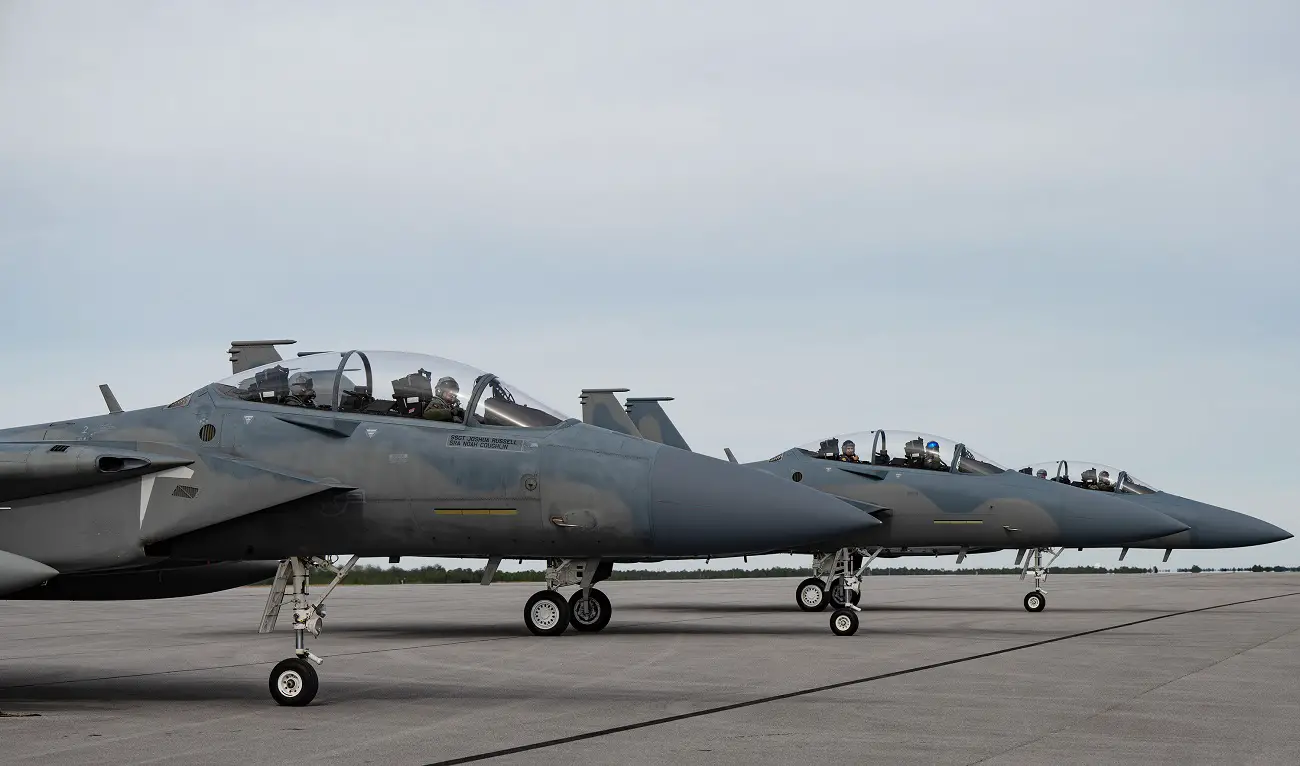The U.S. Air Force’s two newest fighters, F-15EX Eagle II Multirole Strike Fighters, known as EX3 and EX4 touched down at Eglin Air Force Base, Dec. 20, just minutes from each other. The new arrivals bring the Air Force’s total F-15EXs to four, all located at Eglin AFB. The two aircraft belong to the 96th Test Wing (EX3) and 53rd Wing (EX4), who also own the initial two fighters. The new Eagles bring features and capabilities to be tested that the original two jets didn’t have: the cockpit pressure monitor and warning system is a new addition to EX3 and EX4, as well as an ultra-high frequency antenna for satellite communications. The new aircraft also feature a forward fuselage redesigned specifically for the U.S. Air Force. The F-15EX test platforms at Eglin AFB will accelerate development of capabilities both for the platform itself and other combat aircraft. The F-15EX program at Eglin AFB ends this year with two new aircraft, but the combined test wings kept the two available jets in the air for a very busy 2023.
“Our integrated test approach, which combines developmental and operational test, brings the future faster to the warfighter. This ensures the U.S. Air Force continues to provide deterrence and readiness for the high-end fight,” said Brig. Gen. Jeffrey Geraghty, 96th Test Wing commander.
“The F-15EX has met every challenge we’ve thrown at it to date and the platform is on the cusp of being ready for the warfighter. The delivery of the new aircraft paves the way for not only the delivery of combat coded aircraft to the U.S. Air Force, but also the continued development of this incredible addition to the USAF inventory. I am tremendously proud of the team and their efforts to foster the F-15EX program. The F-15EX is the most capable Eagle on the planet and we are just getting started,” said Lt. Col. Christopher Wee, Operational Flight Program Combined Test Force commander.

In May, those two aircraft flew to Alaska and participated in and supported Northern Edge 2023. In June, the F-15EX executed advanced weapons integration missions to ensure the aircraft and various munitions flew and communicated with each other properly. After the integration successes, the F-15EXs flew to Hill AFB, Utah, for exercise Combat Hammer, where the aircraft successfully employed advanced air-to-ground weapons for the first time. These and the efforts over the last two years earned the combined test and evaluation team a glowing report from the Operational Test and Evaluation director. The director’s report stated the F-15EX is operationally effective, suitable, and survivable against threats likely to be encountered while performing its missions in threat environments. This report allows the program to move into a new testing phase. The test wings are scheduled to receive two more F-15EX aircraft in the future.
The Boeing F-15EX Eagle II is an American all-weather multirole strike fighter derived from the McDonnell Douglas F-15E Strike Eagle. The aircraft resulted from the U.S. Department of Defense’ Cost Assessment and Program Evaluation (OSD CAPE) study to recapitalize the aging F-15C/D fleet due to inadequate numbers of F-22s, delays in the F-35 program, and maintaining diversity in the U.S. fighter industrial base through Boeing’s St. Louis division (former McDonnell Douglas). The F-15EX is expected to replace the F-15C/D in performing homeland and air defense missions and also serve as an affordable platform for employing large stand-off weapons to augment the frontline F-22 and F-35. On 25 May 2023, it was announced that the 173rd Fighter Wing at Kingsley Field ANGB, Oregon, would become a Formal Training Unit (FTU) for the F-35A rather than the F-15EX. Basic F-15 training, for both the F-15E and F-15EX, will instead take place at Seymour Johnson AFB, North Carolina, from 2026 onwards.
















